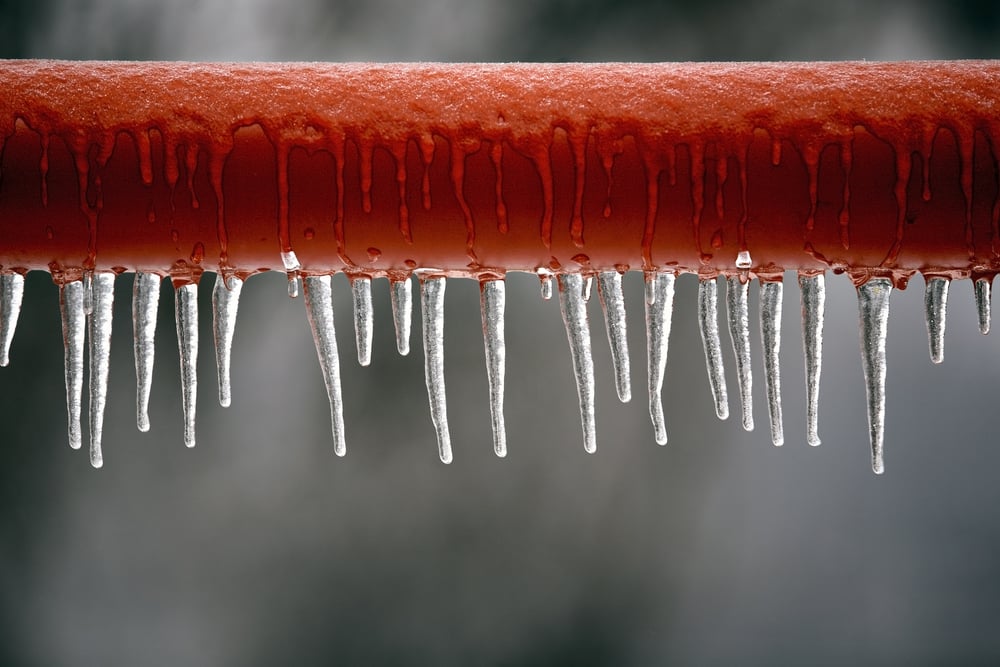Winterizing Your Fire Sprinkler System: Protecting Your Investment
Winter is right around the corner, and as the temperature drops, it's crucial to ensure that your fire sprinkler system remains ready to safeguard your property. Below, we'll explore essential steps to prepare your fire sprinkler system for the cold season ahead.
We’ve outlined six steps that should be taken for all fire sprinkler system types, followed by specific preparations for different types of fire sprinkler systems, such as wet-pipe, dry-pipe, fire pumps, gravity and suction tanks, and backflows. Download the Tip Sheet for Fire System Winter Prep for a complete guide.
Winterizing Tips for All System Types
- Inspect and Test Your System
As winter approaches, give your fire sprinkler system a once-over. Look for any visible damage, corrosion or leaks. Test the alarm system and fire pumps to confirm everything is in good working order. Don't wait until the first snowfall to discover any issues! And if you need replacement sprinkler heads, valves, or accessories, check our Century Fire Parts Store. - Drain Auxiliary Components
If your fire sprinkler system includes auxiliary parts like a fire pump, dry pipe valve or pre-action system, it's crucial to drain them if they're at risk of freezing. This action prevents water from freezing and causing damage. - Insulate Exposed Piping
Insulation is your winterizing ally. Cover any exposed piping, especially in areas where temperatures plummet. This insulation will shield your system from freezing and potential pipe bursts. - Add Heat Tracing
For an extra layer of protection, think about using heat tracing cables or tapes in vulnerable areas. Heat tracing keeps pipes warm, preventing freezing. - Maintain Adequate Heating
Ensure that the spaces where your fire sprinkler system operates maintain a temperature above freezing. Ideally, keep it above 50 degrees to prevent water in the pipes from turning into ice. - Consult with Professionals
For a job like this, consulting with a professional is always a wise move. Fire sprinkler service companies have the expertise to assess your system and provide the best winterizing strategies. Let us know if you’d like someone from Century Fire Protection to contact you. We’re here to help.
Now let's consider specific winter preparations for different types of fire sprinkler systems.
By taking these steps and considering your specific system type, you'll be well-prepared to face the winter.
For Wet-Pipe Sprinkler Systems
While most wet systems are in heated buildings, some may be exposed to freezing temperatures in certain areas.
- Seal any openings, cracks or windows that could allow outside temperatures to affect your system.
- Ensure that even vacant spaces or areas with heaters turned off are maintained at a minimum of 50 degrees.
- Some systems include an antifreeze loop to lower the freezing point, reducing the risk of pipe freezing.
For Dry-Pipe Sprinkler Systems
- Maintain a room temperature above 50°F (10°C) in the dry-pipe valve room by insulating it and using a safe space heater.
- Regularly check the piping pitch to ensure condensate drains properly to low-point drains. Add more drains if necessary.
- Drain low points every few weeks and ensure thorough drainage after the annual trip test.
- Repair any air leaks in the piping system to prevent the dry valve from tripping in case of compressor power loss.
For Fire Pumps
- Maintain temperature above 50°F (10°C) in the pump room.
- Keep the room temperature at least 70°F (21°C) for diesel-engine-driven pumps.
- If the pump's suction is from an open reservoir, ensure the intake and pipe are below the frost level and deep enough in water to prevent ice obstructions.
For Gravity and Suction Tanks
- Flush circulating heaters and piping.
- Ensure circulation pumps for heaters are functioning correctly.
- Overhaul any steam traps and strainers.
For Backflows
- Verify the installation and sealing of any hot boxes.
- Keep rooms housing the devices heated at or above 50 degrees.
- Regularly check hydrants for tightness and repair any leaks. Also, inspect and repair any leakage in buried valves.

Keep these tips on hand by downloading our Tips for Fire System Winter Prep Resource.
Need help preparing your systems for winter? Contact us!
The information provided is for general informational purposes only. Every fire protection system is unique, with specific inspection, testing, and maintenance requirements determined by system type, manufacturer specifications, building use, and local regulations. Consult a qualified fire protection professional or your local Authority Having Jurisdiction (AHJ) to ensure compliance with applicable standards. Century Fire Protection assumes no liability for actions taken based on this content.

